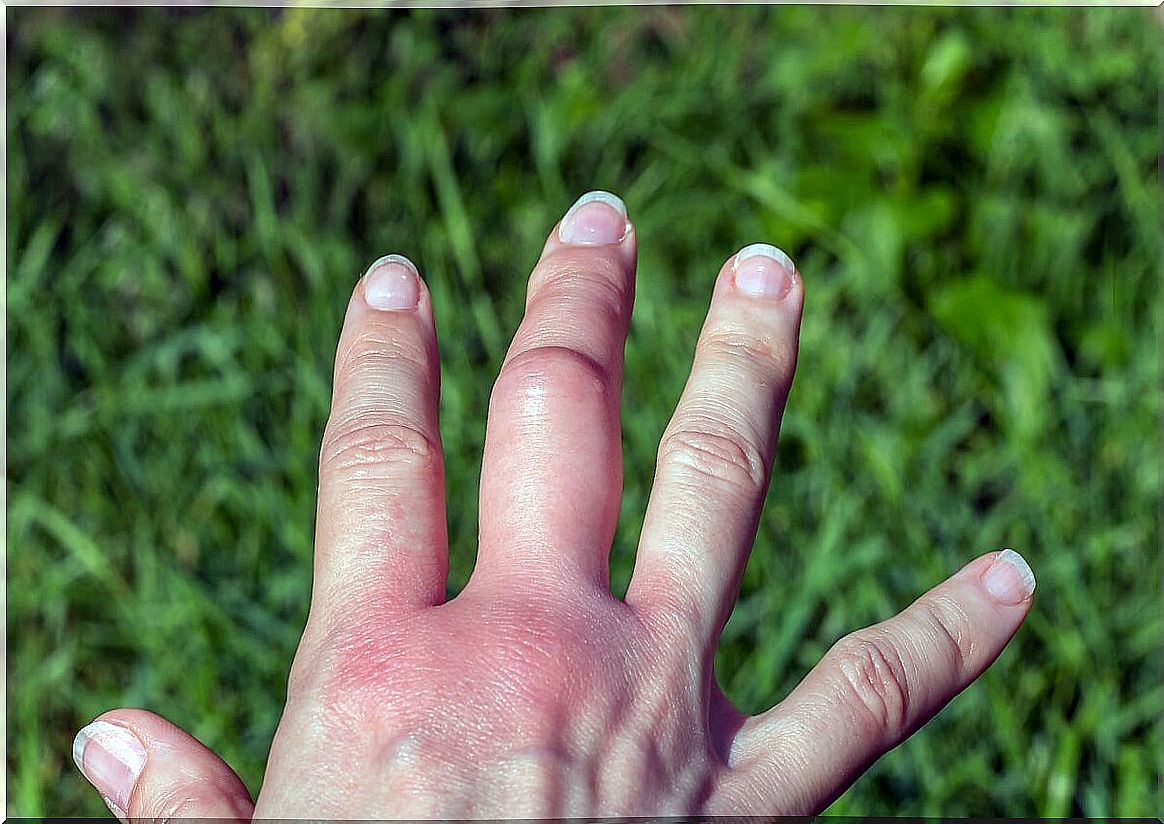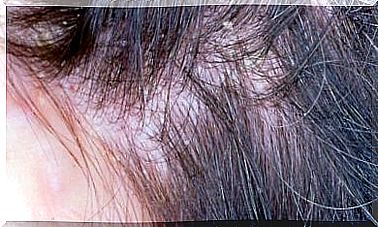Infectious Cellulitis: Causes And Treatment
Infectious cellulitis is, as its name suggests, an acute bacterial infection of the skin that involves the subcutaneous tissue. The affected areas take on a red and inflamed appearance which, in turn, causes pain and a sensation of heat to the touch.
According to some studies, its occurrence rate is much higher in patients over 60 years of age than in other population groups. It is necessary to distinguish this condition from aesthetic cellulite, since the second is nothing more than an irregularity in the thighs and buttocks due to the presence of adipose tissue and certain circulatory abnormalities.
Regular cellulite is a cosmetic problem, while infectious cellulite is a potentially serious health issue. If left untreated, the infection can spread to the lymph nodes and bloodstream, a condition known as “bacteremia,” which greatly aggravates the patient’s clinical picture. We will tell you more below.
Symptoms of infectious cellulitis
In general, infectious cellulitis processes are located in the lower extremities. The United States National Library of Medicine helps elucidate the most common clinical signs. Among them, we find the following:
- Fatigue and fever with chills and sweating.
- Inflammation and redness of the skin, which becomes more and more evident as the infection spreads.
- Lesions and rashes on the skin that appear suddenly in the affected area.
- Tight, shiny, ridged skin and warm to the touch.
- Muscle aches and joint stiffness, caused by the local inflammatory physiological process.
In general, the affected skin surface has an “orange peel” appearance, with a diffuse-edged rash and the frequent presence of petechiae – small lesions that correspond to red blood cells accumulated by a broken capillary.

Possible complications and risks
In the most severe cases, lymphadenopathy – swelling of the lymph nodes – is usually observed, as indicated in the MSD Manual. This indicates that the infection is spreading and that the patient requires prompt treatment. When bacteria invade other systems, the following events can occur:
- Infection in the blood, that is, a bacteremia.
- Bone infection (osteomyelitis).
- Inflammation of the lymphatic vessels (lymphagitis) and lymph nodes (lymphadenopathy).
- Inflammation of the heart due to the presence of bacteria in its tissues (endocarditis).
- Death of tissue. An example of this is necrotizing fasciitis.
According to studies, cellulitis is the most common soft tissue infection in the world -67% of the total, approximately-, which is why it is a not inconsiderable source of hospitalization and even mortality in the aging population.
How does the infection occur?
The pathogens responsible for cellulitis are usually Streptococcus pyogenes and Staphylococcus aureus , bacteria that are found on the skin’s surface and that can enter the skin. These microorganisms produce enzymes that, in turn, destroy the cellular components responsible for containing the infection. This is how they spread.
The Centers for Disease Control and Prevention (CDC) indicate that anyone can develop infectious cellulitis, but that there are certain events that predispose to it. Among all, we find the following:
- Wounds that cause a break in the skin. This greatly facilitates the entry of pathogens.
- Chronic skin conditions, such as dermatitis and others.
- Other skin infections, such as chickenpox.
- Intravenous drug use.
- History of cellulite and obesity.
- Diabetes or immune system weakened by any other pathology.
Diagnosis of infectious cellulitis
After noticing a strange swelling or kind of rash that appears suddenly and causes pain to the touch, it is time to go to the doctor quickly. In the face of this type of infection, there is no time to lose, since if they are ignored they can become a serious physiological problem.
As the Mayo Clinic indicates, infectious cellulitis is diagnosed quite easily. The medical specialist detects the bacterial infection just by looking at the skin. In some cases, blood tests and other tests may be ordered to rule out any underlying conditions or, failing that, an expansion of the disease.
Treatments available for infectious cellulitis
Antibiotics are the treatment of choice, although the specific drug chosen will depend on the presence or absence of purulence in the affected area and other risk factors that indicate severe or resistant infection. Antibiotics are usually prescribed orally for 5 to 14 days. Still, call your doctor again if:
- Signs and symptoms do not improve shortly after starting treatment.
- The signs and symptoms are considerable.
- You have a high fever that won’t stop.
Infectious cellulitis usually subsides within 7 days of treatment, but it may take longer in more severe cases. In immunocompromised people or those with too severe infections, a hospital admission may be required, where antibiotics and analgesics will be administered intravenously.

Prevention and recommendations
Placing cool, damp cloths on the affected area, and elevating it periodically, often helps soothe pain and improve circulation. In addition, the consumption of painkillers will alleviate to a certain extent the discomfort caused by the pathology.
As far as prevention is concerned, the thing is quite simple; If you lead a proper lifestyle and you are not obese, it is more difficult for you to suffer from infectious cellulite. This condition is closely linked to diabetes and being overweight, for example.
On the other hand, sanitizing any wound suffered as much as possible is also essential to prevent this type of infection from occurring. By thoroughly cleaning any potential entry barriers for pathogens, they are less likely to enter deeper, more delicate skin areas.
Final thoughts
As you may have seen, infectious cellulitis is a fairly common clinical entity that, if not treated in time, can become considerably worse. Thus, in the event of sudden and painful swelling — especially in the feet and legs — a quick visit to the doctor is mandatory.









